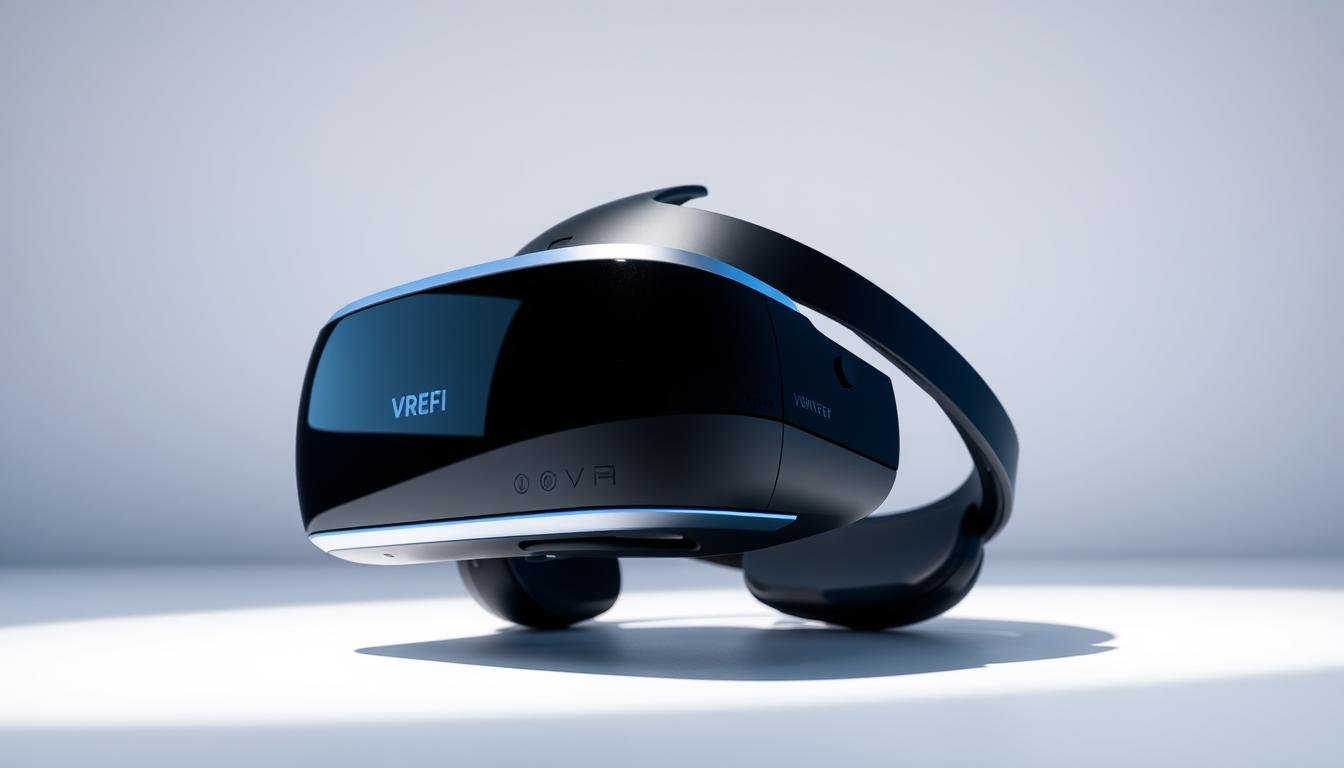Did you know that over 10 million standalone VR headsets were sold globally in 2023? This surge in popularity highlights a significant shift in the virtual reality landscape. Gone are the days when a powerful computer was essential for an immersive experience. Today, standalone devices like the Meta Quest series have revolutionised the way we engage with virtual worlds.
Standalone headsets are designed to offer a hassle-free entry into virtual reality. Unlike traditional setups, these devices require no external hardware, making them perfect for beginners. Whether you’re exploring immersive gaming or diving into interactive experiences, standalone options provide unparalleled convenience.
This guide will walk you through the basics of standalone VR, from choosing the right headset to setting it up effortlessly. You’ll also discover essential accessories to enhance your experience. Ready to step into the future of virtual reality? Let’s get started.
Key Takeaways
- Standalone headsets eliminate the need for a computer, offering a seamless experience.
- Devices like the Meta Quest series are perfect for beginners due to their ease of use.
- Immersive gaming and interactive experiences are now more accessible than ever.
- This guide covers the basics, setup, and accessories for standalone VR.
Exploring Standalone VR Headsets
Standalone VR headsets have become a game-changer in the virtual reality industry. These devices offer a seamless experience without the need for external hardware, making them ideal for beginners and enthusiasts alike. Whether you’re diving into immersive gaming or exploring interactive applications, standalone headsets provide unmatched convenience.
Key Benefits of Standalone Devices
One of the most significant advantages of standalone headsets is their portability. Unlike PC-based systems, these devices are lightweight and easy to carry, allowing you to enjoy VR anywhere. They also require minimal setup, saving you time and effort.
Another standout feature is the untethered freedom they offer. Without cables restricting your movement, you can fully immerse yourself in virtual worlds. Modern standalone headsets also come with advanced tracking systems and on-board processing, ensuring smooth and responsive gameplay.
For beginners, the simplicity of these devices is a major plus. You don’t need technical expertise to get started, and the intuitive controls make navigation effortless. Additionally, standalone headsets cater to both casual and immersive gaming needs, making them versatile options for all users.
Popular Options like Oculus Quest
When it comes to standalone headsets, the Oculus Quest series stands out as a top choice. Known for its affordability and performance, the Meta Quest 3 offers a 120 Hz refresh rate for fluid gameplay and enhanced mixed reality capabilities. Its user-friendly design makes it perfect for newcomers.
Other notable options include the Pico 4, which boasts 4K+ resolution and a wide field of view, and the Apple Vision Pro, renowned for its stunning visuals. Each device caters to different preferences, ensuring there’s something for everyone.
| Headset | Price | Key Features |
|---|---|---|
| Meta Quest 3 | Below $500 | 120 Hz refresh rate, mixed reality |
| Pico 4 | Around $400 | 4K+ resolution, wide field of view |
| Apple Vision Pro | Approx. $3,500 | High pixel density, luxury design |
How to Play VR Without a PC
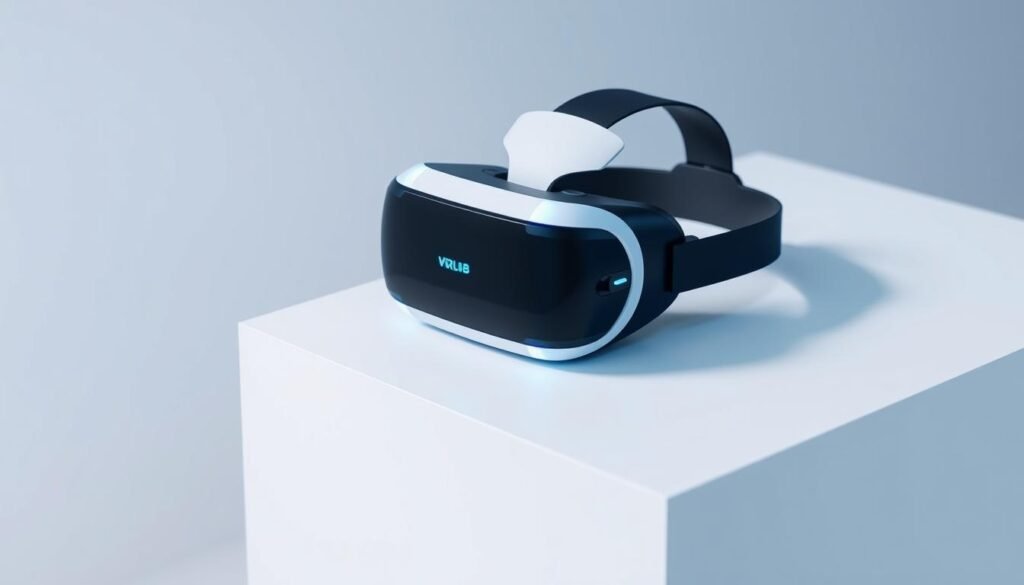
Stepping into virtual reality has never been easier, thanks to standalone headsets. These devices are designed to deliver immersive experiences without the need for a computer. Whether you’re a beginner or a seasoned enthusiast, getting started is straightforward and hassle-free.
Step-by-Step Guide for Beginners
First, unbox your standalone headset and ensure all components are present. Most devices come with controllers, a charging cable, and a user manual. Plug in the device to charge fully before your first use.
Next, power on the headset and follow the on-screen instructions to set up your account. This usually involves connecting to Wi-Fi and downloading the necessary app. The built-in processor ensures smooth navigation through the interface.
Once set up, explore the app store to find games and experiences tailored for standalone devices. Look for titles optimised for your headset to enjoy the best performance. Popular choices include immersive adventures and social games.
Here’s something extra: Adjust the headset’s straps for a comfortable fit and ensure the lenses are clean for optimal clarity. This simple step can significantly enhance your experience.
| Step | Action |
|---|---|
| 1 | Unbox and charge the headset |
| 2 | Set up account and connect to Wi-Fi |
| 3 | Download apps and games |
| 4 | Adjust fit and clean lenses |
By following these steps, you’ll be ready to enjoy virtual reality without the need for a computer. Standalone headsets offer a seamless and immersive experience, perfect for beginners and experts alike.
Setting Up Your Standalone VR Device

Setting up a standalone VR device is simpler than you might think. These devices are designed for ease of use, ensuring a smooth start to your virtual reality journey. Unlike traditional systems, standalone headsets eliminate the need for external hardware, making them ideal for beginners.
Installation Tips and Easy Setup Procedures
Begin by unboxing your standalone headset and checking all components. Most devices include controllers, a charging cable, and a user manual. Charge the device fully before your first use to avoid interruptions.
Next, power on the headset and follow the on-screen instructions. This typically involves connecting to Wi-Fi and setting up your account. The built-in processor ensures a seamless setup process, even for first-time users.
Here’s a quick checklist to guide you:
- Charge the device fully.
- Connect to a stable Wi-Fi network.
- Download the necessary app for your headset.
Connecting Accessories and Controllers
Once the headset is set up, it’s time to connect your accessories. Pair the controllers by following the prompts on the screen. Ensure they are fully charged for uninterrupted gaming sessions.
If your device supports additional accessories, such as headphones or external sensors, connect them now. Properly managing cables ensures a clutter-free experience, enhancing immersion.
For an optimised setup, adjust the headset’s straps for a comfortable fit. Clean the lenses regularly to maintain clarity. These small steps can significantly improve your overall experience.
Standalone devices, like the all-in-one VR headsets, offer unmatched convenience. Their portability and ease of use make them perfect for both casual and immersive gaming. By following these steps, you’ll be ready to dive into virtual reality without any hassle.
Optimising Your VR Gaming Experience
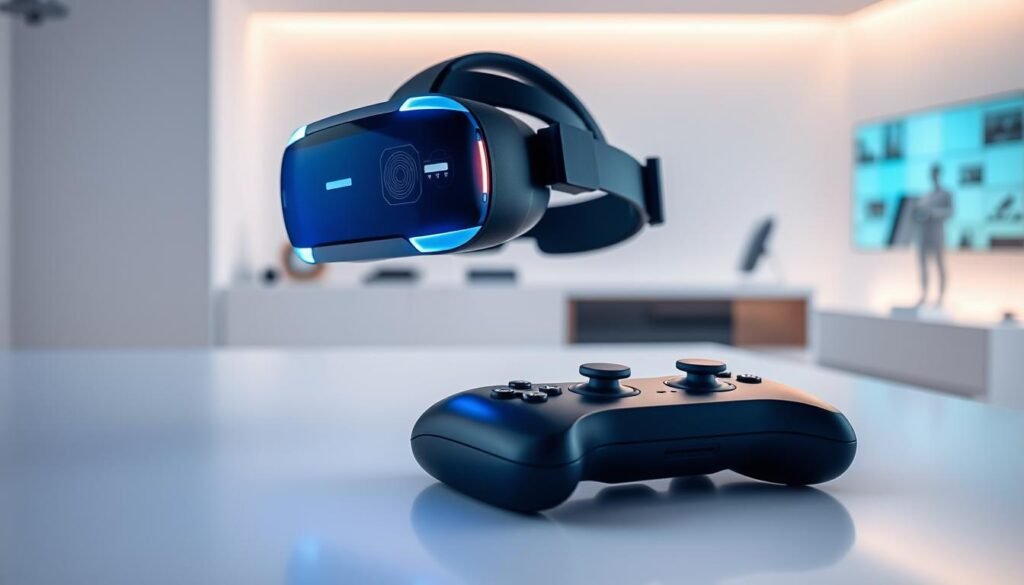
Maximising your virtual reality gaming experience starts with optimising your setup. Whether you’re using a standalone headset or a hybrid system, fine-tuning your device can significantly enhance your immersion and performance. Let’s explore how you can achieve the best possible experience.
Enhancing Graphics and Performance
To elevate your gaming experience, begin by adjusting the graphic settings on your standalone headset. Higher resolution and frame rates can make a noticeable difference in visual clarity and smoothness. Many devices allow you to customise these settings directly from the interface.
Here are some practical tips to enhance performance:
- Optimise in-game settings: Lowering certain effects like shadows or reflections can improve frame rates without sacrificing too much visual quality.
- Keep your device updated: Regular software updates often include performance improvements and bug fixes.
- Use high-quality peripherals: Controllers and headphones designed for VR can enhance both comfort and responsiveness.
For those using hybrid setups, a computer can stream higher-quality content to your headset. Ensure your computer meets the recommended specifications for the best results. This approach combines the convenience of standalone devices with the power of a computer for an unparalleled experience.
Maintaining a high frame rate is crucial to avoid motion sickness. Devices like the Meta Quest 3 offer advanced tracking systems and passthrough cameras, ensuring smooth gameplay. For more tips on maximising your online virtual reality experience, explore our detailed guide.
By following these steps, you can transform your gaming sessions into immersive adventures. Whether you’re a casual player or a dedicated enthusiast, optimising your setup ensures every moment in virtual reality is unforgettable.
Essential Accessories for an Immersive Experience
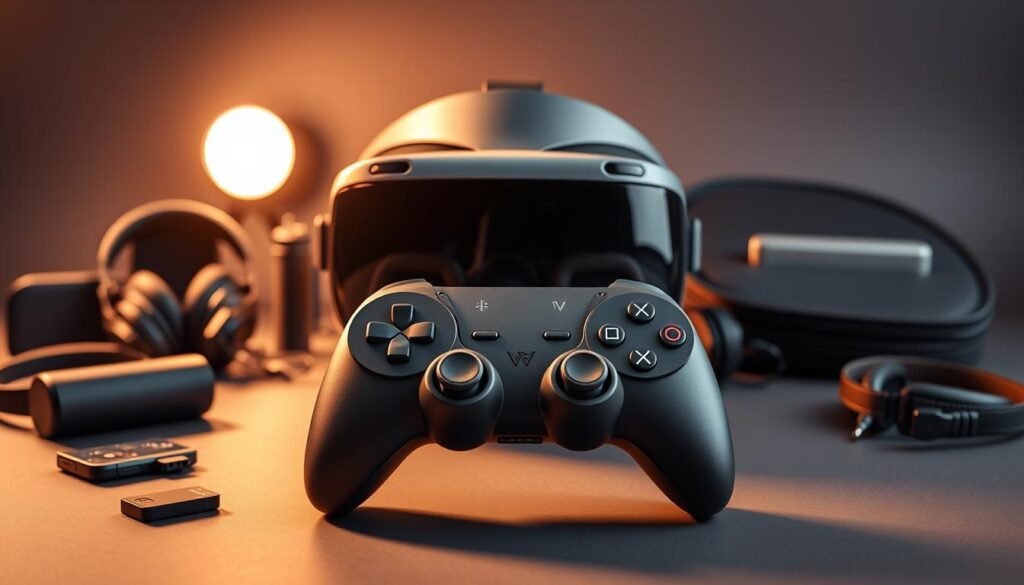
Enhancing your virtual reality experience often begins with the right accessories. Standalone headsets are powerful on their own, but pairing them with high-quality peripherals can take your immersion to the next level. From controllers to specialised apps, these additions ensure seamless interaction and improved performance.
Recommended Controllers and Apps
Controllers are a vital part of any VR setup. Devices like the Meta Quest 3 come with intuitive controllers, but upgrading to grips like the G4 Pro Performance Controller Grips can enhance comfort during long gaming sessions. These grips reduce fatigue, allowing you to focus on the game.
Apps also play a crucial role in optimising your experience. Many standalone headsets offer apps that improve interface navigation and control. For example, Beat Saber and Asgard’s Wrath 2 are popular choices that showcase the capabilities of your device. These apps are designed to work seamlessly with standalone systems, ensuring smooth gameplay.
Here’s something to consider: Regularly updating your apps and firmware can improve performance. Updates often include bug fixes and new features, keeping your experience fresh and efficient.
Choosing the Right Accessories
Selecting accessories that complement your headset is essential. For instance, the Pimax Crystal VR Headset includes external depth-of-field cameras and eye-tracking technology, enhancing immersion. Pairing it with WiFi 6E ensures wireless streaming without lag.
Here are some practical tips for choosing accessories:
- Check compatibility: Ensure accessories work with your specific headset model.
- Prioritise comfort: Look for ergonomic designs, especially for controllers and headsets.
- Invest in quality: High-quality peripherals often offer better durability and performance.
By carefully selecting and integrating these accessories, you can create a setup that maximises your virtual reality experience. Whether you’re a casual gamer or a dedicated enthusiast, the right tools make all the difference.
Comparing Standalone and PC VR Options
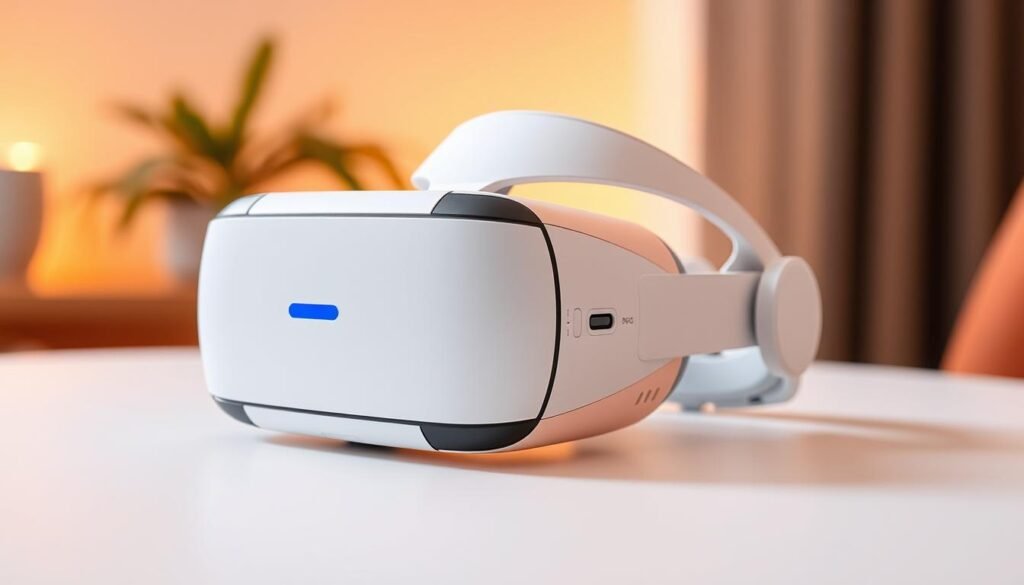
Choosing between standalone and PC VR systems can be a challenging decision for newcomers. Both options offer unique advantages, but understanding their differences is key to finding the right fit for your needs. Whether you prioritise portability or performance, this comparison will help you make an informed choice.
Performance and Portability Considerations
Standalone headsets excel in portability, allowing you to enjoy virtual reality anywhere without being tethered to a computer. Devices like the Meta Quest 3 are lightweight and easy to carry, making them ideal for casual gaming or on-the-go use. However, they often have lower processing power compared to PC VR systems.
PC VR, on the other hand, offers superior graphics and performance. With a powerful computer, you can run high-end games and immersive experiences. The downside? You’ll need to deal with cables, which can limit movement and add complexity to your setup.
Cost and Customisation Differences
Standalone devices are generally more affordable and user-friendly. They require no additional hardware, making them a budget-friendly option for beginners. Popular models like the Pico 4 and Meta Quest 3 offer excellent value for their price.
PC VR systems, while more expensive, provide greater customisation. You can upgrade your computer to enhance performance or add accessories for a tailored experience. For those who want the best of both worlds, devices like the Pimax Crystal allow you to switch between PCVR and standalone modes.
Ultimately, your choice depends on your priorities. If you value convenience and affordability, a standalone headset is the way to go. For those seeking top-tier performance and customisation, PC VR is worth the investment.
Conclusion
Standalone headsets have transformed the way we engage with virtual reality. These devices, like the Oculus Quest, offer unmatched freedom and ease of use. They eliminate the need for external hardware, making them perfect for beginners and casual users.
While PC-based systems deliver superior graphics, standalone options excel in portability and simplicity. Choosing the right headset depends on your priorities. If you value convenience and affordability, a standalone device is ideal. For those seeking high performance, PC VR might be the better option.
Ultimately, the right headset and accessories can significantly enhance your experience. Whether you opt for a standalone system or a PC setup, virtual reality offers endless possibilities. Explore more about choosing the right VR solution to find the perfect fit for your needs.
FAQ
What is a standalone VR headset?
Can I use a standalone VR headset without a PC?
What are the benefits of standalone VR devices?
How do I set up a standalone VR headset?
What accessories enhance the VR experience?
How does standalone VR compare to PC VR?
Are standalone VR headsets good for gaming?
Can I connect a standalone VR headset to a PC later?
Source Links
- The Best Budget VR Headsets – IGN
- Best Free VR Games
- Among Us VR
- Parent’s guide to VR headsets and VR games for kids
- VR Headset QR Codes – Hypergrid Business
- Best VR Headsets in 2025: Which One is Right for You?
- VR Reviews and Lab Tests
- Among Us 3D: Demo release date and what to expect
- Review: Alien: Rogue Incursion – The VR Realm
- TechRadar | the technology experts
- HP OmniBook Ultra Flip 14 inch Laptop 14-fh0016TU, Gray
- Manual: VR and MR development in Unity
- MSFS 2024 Major graphic and audio stuttering in VR
- Pimax Crystal VR Headset
- How Much Storage Do You Really Need For Your Meta Quest 3S?
- The Best Antivirus Software for 2025
- Quest v74 Brings Web Shortcuts, DisplayPort Out & More
- PlayStation VR2 Hand Tracking Review: How Does It Compare To Quest 3’s?
- META QUEST 3 REVIEW: Alien: Rogue Incursion Is a Dream Realized, Shows the Future of VR Gaming
